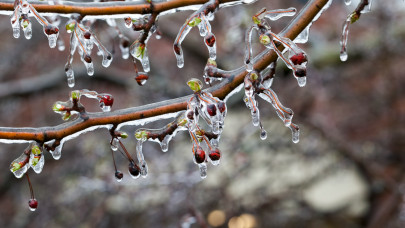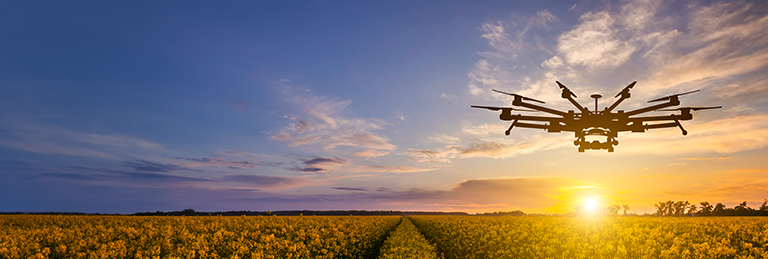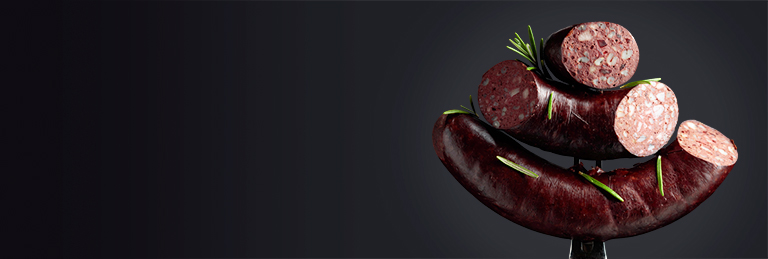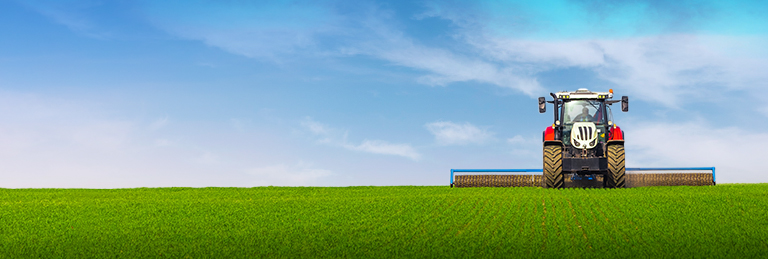However, the vast majority – a good three quarters – of the world's sugar is still obtained from sugar cane, grown in sub-tropical climate zones.
Bioethanol production, which necessitates additional cultivation areas for both sugar cane and sugar beet, is often coupled to sugar production. And since the emergence of discussions surrounding the “energy revolution”, this has been joined by the development that, particularly in Germany, sugar beets are also used in biogas plants to break up maize-heavy substrate compositions. This essential role followed the finding that sugar beet has one of the highest easily fermentable dry matter yields of any crop.
Sugar companies and beet producers in the EU have geared up for liberalisation. After two years under liberalised market conditions, however, it is becoming apparent that producing for the global market cannot be achieved profitably without state subsidies. Exacerbated by various restrictive plant protection product authorisations and the guarantee of coupled payments in individual states, beet sugar production in the EU, and particularly in Germany, is in crisis. However, competitiveness remains linked to the cost-optimised capacity utilisation of the existing systems, resulting in restructuring measures with factory closures in many locations.
While the EU has fought its way back to become a net exporter of sugar, it has to integrate the volumes from a number of free-trade agreements (including MERCOSUR) into its market activities. At the same time, Russian agriculture has undergone an upswing despite, or precisely because of, international sanctions. This is also benefiting Russia's sugar industry, with the country virtually doubling its cultivation area (to more than one million hectares) within a few years and now being regarded as self-sufficient in sugar.
The “cultivation boom” seen in previous years, with increased demand for reliable harvesting technology, is currently being superseded by a “status quo” phase resulting only in the replacement and renewal of used machines.
Harvesting what has grown
It should be possible to harvest the sugar that has grown in the field, and can be extracted profitably in the factories, as completely as possible. Expert findings suggest the beet head now contains significantly fewer harmful, non-sugar substances – due to breeding and cultivation progress – and that it can also be used for efficient sugar extraction, is additionally coming into play. A technical response to rapid yield growth in beet cultivation is also required – ever-increasing volumes have to be transported from the field.
These relationships are unavoidably impacting the requirements of harvesting technology: gentle on the soil, low-loss, as little damage and as little (cutting) damage as possible, no (green) leaf residues, easy to operate and nevertheless cost-efficient!
Irrespective of the industry's own assessment, this results in even greater cost pressure on all areas of production, but particularly harvesting technology; after all, about 25 percent of the costs in the field are attributable to this process.
6-, 9- or 12–row harvesters
The beet harvesting segment is continuing to move forward in the general trend towards performance- and cost-oriented, fully automated mechanisation in agriculture. Large self-propelled machines, usually with six rows, increasingly frequently with nine rows and even 12 rows, and with (intermediate) bunkering are now the standard worldwide. What started back in 1974/1975 with the first six-row beet harvesters with bunkers – the Südzucker-Betaking 3000 and the Holmer-System Paintner – have been, and continue to be, perfected during the past few decades. Since then, no clear trend has been apparent with regard to optimum row widths; whether (30), 45, 50, 56 or 60 cm is best depends on a number of other factors in the agricultural enterprise. However, a harvesting system must be able to properly harvest 100,000 plants per hectare with – particularly in recent years – increasing yields.
Further developments in the areas of gentle handling of the sugar beet, a low soil content with nevertheless low harvest losses – all with maximum soil protection – are now usually found only in the multi-row, self-propelled machines that complete harvesting with a single operator. The 12-row versions always necessitate additional, sophisticated removal technology/logistics on the field; however, focus is always placed on reducing soil loads. Hauled six-, eight- and 12-row variants (topper and harvester-loader) have only survived on the extensive plains of North America, and in the black earth regions of Eastern Europe, in which maximum power in the shortest space of time is crucial – due to the weather conditions – and the transport width on the road is not subject to any special regulations. The prerequisite for this is extensively standardised operating conditions (large, absolutely flat areas with uniform, humus-rich, sandy-loamy soils). Local differences in gradients and soil types quickly bring these simply designed machines to their limits.
Driver assistance systems
Naturally, changing demands in the external quality of the beet (scalping/whole beet) for biogas use and long-term storage are also driving innovation. High mobility, manoeuvrability, fast operational readiness and operating reliability are parameters for efficient operation on plots of all sizes (with/without slope). Great attention must be paid to ergonomic operation and training the operating personnel in high-tech driver's cabs. Camera monitoring and touch-screen operation via/on monitor interfaces demands maximum attention from the driver, who is thankful for any and all automation, so driver assistance systems remain the major trend.
However, this may not prevent direct contact with the soil and harvested crop in order to keep sight of top-quality work with acceptable soil conditions. Projects to offer assistance for navigability and the optimum deployment time for the large machines have also been initiated. In order to simplify the highly complex harvesting process, particularly when more than six rows are involved, machine manufacturers are investing a great deal of cash and manpower in the development of driver assistance systems, performance-dependent automation and the appropriate sensors required for this – often across companies in cooperation with scientists.
Use of the latest tyre technology, with balance and roll stabilisation for two- and a growing number of three-axle machines is increasing operating flexibility on sloping terrain, and extended, folding bunker booms allows the construction of larger clamps for 10m loaders. The digging units holding the lifting tools (vibration shares) are now mounted individually and adapt automatically, precisely and independently of one another, to any uneven surfaces in the field. This capability is likely to be increasingly appreciated, particularly for larger working widths, while it is a must for 12 rows. In terms of weight, increasingly lighter but equally robust materials are being used. Machines for professionals can not only be remotely maintained with the aid of smartphones and/or tablet PCs, their settings can also be optimised through the use of telematics, thus reducing working time and costs, and making driving simpler.
Minimum scalping or defoliation
Sugar beet defoliation/topping using two shafts, alternatively mounted at the front, with rubber and steel flails, whose rotational speed and working height have to be individually adapted to the crop, has also led to the further development of systems to automatically adjust the height of the topping knives while they are in work. At the same time, all manufacturers are providing efficient and inexpensive responses to flail defoliation with solutions for what is referred to as “minimum scalping”. This topping technique, using modified impact topping (a combination of rubber and steel flails on one shaft), is now fitted on about three quarters of machines sold.
Topping and minimum scalping methods have become established in practice; our partners in the state sugar industries are responsible for specifying a “target beet without leaves” and the technology we have available has the appropriate answer to deliver it.
Defoliation with two independently operating, front-mounted flail shafts is a fully-fledged alternative on the self-propelled beet harvester with bunker both for beet for biogas use and in the sugar factory. The hauled, three-shaft defoliator with/without scalper is sold in two-phase systems (in the USA/Russia for example); it must be possible to operate this, even in the 12-row version, at the same speed as the separately hauled harvester-loader.
Beet and soil logistics
Efficient beet processing in the sugar factories (or biogas plants) necessitates the management of vast flows of goods. With campaign lengths of 120 days and more, the beet clamps must be loaded around the clock. A key role in this is played by the (self-propelled) cleaning loader. All manufacturers have completed the move to 10m intake widths, with the patented difference of the flexible working angle of the pick-up table.
Of course, this necessitates the adaptation of the harvesting technology (and also the intake technology on the cleaning loaders) as well as the logistics chains, which are supported and networked with diverse software programs. One hurdle is always when operating under difficult, moist conditions with high percentages of wet, sticky soil in the clamps. Some manufacturers are shifting towards having seven (instead of six) rollers working in the intake area, equating to 15% more cleaning area. The following is also true in the dispute among experts regarding the advantageousness of turbine and/or roller cleaning: it depends on the settings!
Stationary loaders are now only available for special uses (with a picking table, or for large clamps) – hardly any further development is being undertaken.
Clean and free of stones
Harvesting is completed for suppliers of sugar beet to a sugar factory with pre-cleaning and the evaluation of the exterior quality (primarily of soil/foreign object/leaf components). The situation is different for biogas plants: dry or wet cleaning and, above all, stone removal are required depending on location and soil type. With growing interest from operators of biogas plants, an increasing number of established machine manufacturers are offering technical solutions for appropriately preparing this beet. The potential procedure is determined by the method of long-term preservation of the beet material.
Here, whole beet silage has become established due to reasons of loss and cost minimisation. Stone removal is a central issue for all manufacturers, whereby some of them are still combining and offering cleaning and shredding modules of various output classes depending on requirements. Innovative, compact machines – in stationary or mobile operation – make use of the mechanical and physical properties of the sugar beet, such as their static buoyancy in water, for instance; beet washing can, but does not have to, be carried out at the end of this process.
Electronics and efficiency
The development of technology for sugar beet harvesting and transport is characterised by the extensive use of electronics for regulation and control functions – be it in the sugar factory or up to the fermenter in a biogas plant. The touch-screen technology is aimed at relieving the machine operator even further; operations are being increasingly automated in order to maintain or increase the quality of work and set-up times with changing drivers in 24-hour operations. Manufacturers are able to offer an entire package of networking: harvesting management, to-the-second video documentation of the entire work process or transport logistics with the sugar factory/biogas plant. The transport plan triggers the harvesting job for the harvesting community or contractor – in Germany, 95 percent of land is harvested in this way. On completion of the work, this in turn forms the basis for subsequent mechanised clamp uncovering and removal – and, without manual intervention, up to and including the provision of data relevant for invoicing.
Stricter exhaust emission regulations in the EU (currently exhaust emission standard Stage V) are necessitating new engine technology (usually with the addition of AdBlue) without any loss of power output. Using engines that operate at increasingly lower engine speeds is reducing fuel consumption and the volume level with the ever more high-performance machines.
Soil protection is the trump card
The self-propelled beet harvester with bunker – usually working six or nine rows, and also increasingly with 12 rows – is setting the standard worldwide. In combination with the latest tyre technology or with track systems, offset driving in two- or three-axle machines ensures efficient, soil-protecting harvesting and creates a breathing space in operation for periods of poor weather in the autumn. Progress in tyre technology (with the reduction of tyre inflation pressures to 1.4 bar and thus an increase in the contact surface) benefits the soil. Directional stability, lateral slope suitability and axle weight distribution have been improved in combination with sophisticated (hydraulic) suspension concepts. Hauled transfer vehicles with, for example, soil-protecting tracked running gear, are now also used with beet harvesters with bunkers for intermediate transport on the field wherever field size and high yields necessitate this.
Conclusion and outlook
Cleaning and loading play a key role in the logistics networked with the organisation of beet harvesting. In states with pre-cleaning at the edge of the field, the self-propelled 'Maus' cleaner loader with a 10m intake is now part of the standard procedure. In states with large collective clamps in the area (for example in France) the roller intake is replaced by a bunker that is loaded using a wheel loader/excavator. Smaller hauled or trailed machine variants are now only being developed for special solutions (particularly stones!). The mechanisation of clamp care – especially on a non-woven cloth basis – is proceeding apace in parallel in the light of longer campaigns.
Digital networking of sowing, cultivation, harvesting, clamp care and transport data is ensuring the optimisation of the entire process chain. The competitiveness of beet – for use in sugar factories or biogas plants – is being stabilised and increased thanks to technical innovations; regarded globally, this remains necessary. All machine manufacturers are now active in all important beet growing regions around the globe. Co-operative alliances with external research institutes are being forged in the cost-intensive development of sensor-controlled harvester unit automation to relieve the driver. The message for the good beet growing regions around the world is that the latest technology on the field (with optimally trained drivers) significantly increases the competitiveness of sugar from beet!
Article by Dr. Klaus Ziegler, Association of Franconian Sugar Beet Growers, Eibelstadt, Germany







